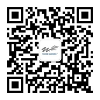Better Versatility = Better Relationships
(2012年4月2日)
In conversations with clients about the impact of the current economic downturn, I keep hearing one concern everyone seems to share: "how can we help our people manage the strain of all the budget cuts, layoffs, and reorganizations?"
Employees are worried about their jobs even while adapting to major changes in their work environment — new reporting relationships, restructured work teams, different job assignments. Even when they understand the necessity for all the changes, the effects can be debilitating — communication gets more difficult, morale sags, and productivity slows.
So what’s the answer? How can companies deal with these problems and maintain productivity and efficiency? If you are a leader concerned about this question, you know you can’t control the external economic conditions. You can, however, do everything possible to help your people cope. A simple place to start is to make sure communications breakdowns aren’t adding to everyone’s stress and getting in the way of trust, teamwork and collaborative effort. As people struggle to adjust to new realities at work, it’s normal for them to experience misunderstandings and increased relationship tension. By becoming more versatile in their interpersonal communications, employees, managers and leaders can better understand differences in communication preferences and create more effective and productive relationships.
Versatility can be learned, practiced and improved over time. It’s based on understanding your own and others’ Social Styles — defined in Wilson Learning’s model in terms of four categories – Analytical, Driver, Expressive and Amiable. Each style is characterized by being either more or less "Tell" or "Ask" oriented and more or less "Task" vs. "People" oriented. People generally feel very comfortable communicating with others who share their style, but can have problems with different styles. If you’ve ever felt impatient, intimidated, or frustrated in a conversation with a colleague, friend or family member, there’s a likelihood that the root problem is a style difference neither of you recognizes.
To improve versatility, managers and employees need to:
- Get feedback from others to understand their own social style. Knowing how you are perceived by others is critical. Study after study shows that most of us have no idea how we are coming across to others.
- Learn to identify the social style of others (e.g., Analyticals, Drivers, Expressives, and Amiables)
- Learn to adapt their own style of communicating to match the preferences of others, putting them at ease, building trust, and allowing both parties to work together to accomplish the tasks at hand.
Have you experienced a communication problem at work caused by different social styles? What happened and what affect did it have on your work performance?
These are our thoughts…What do you think?








 请填写下方的表格,免费订阅我们最新的研究和文章。
请填写下方的表格,免费订阅我们最新的研究和文章。






